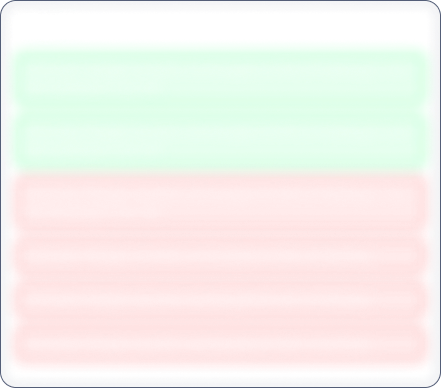Year End Sale 50% off
M & B Engineering

No Data Available
Investor Sentiment
M & B Engineering Share price and Fundamental Analysis
Key Metrics
Included In
Stock Returns
Stock Heatmap

No Stocks
Smart Score

Unlock Smart Score
See Detailed Analysis & Insights


Unlock Insights
See Detailed Analysis & Insights
Technicals
Returns Calculator
If you would have investedResearch Report
No Research Report
Corporate Action
Financials
Key Ratios
ROE
Avg ROE (3 Yrs) : NaN%
ROCE
Avg ROCE (3 Yrs) : NaN%
ROA
Avg ROA (3 Yrs) : NaN%
NPM
Avg NPM (3 Yrs) : NaN%
Dividend History
5 Year FactSheet
Documents

No Data Available
News
M & B Engineering Management and History
Company Management


Unlock Management Data
See Detailed Analysis & Insights
Company History
M&B Engineering Limited was originally incorporated as 'Manibhai and Brothers (Construction) Private Limited' a Private Limited Company, dated June 16, 1981, issued by the RoC. Thereafter, Company name changed to 'M & B Engineering Private Limited' and a fresh Certificate of Incorporation dated November 22, 2006 was issued by the Registrar of Companies, Gujarat, Dadra and Nagar Haveli. Subsequently, the status got converted into a Public Limited Company and the name was changed to 'M & B Engineering Limited' with Incorporation dated March 30, 2011 issued by the Registrar of Companies, Gujarat, Dadra and Nagar Haveli.
The business of the Company is structured into Phenix Division which provides comprehensive solutions for PEBs and complex structural steel components; and Proflex division which provides self supported steel roofing solutions. The Company provide comprehensive turn-key solutions which includes project design, engineering, manufacturing and erection in accordance with customer requirements across industrial and infrastructure segments. It has delivered solutions for customers engaged in diverse sectors including general engineering and manufacturing, food and beverages, warehousing and logistics, power, textiles, and railways. It has undertaken execution of over 8,700 projects until the end of June 2024 under their Phenix and Proflex Divisions.
The Company has two manufacturing facilities at Sanand, Gujarat and Cheyyar, Tamil Nadu for manufacturing of PEBs and complex structural steel components with a combined installed capacity of 103,800 MTPA for manufacturing PEBs. The Company incorporated Phenix Construction Technologies Inc., as a wholly owned subsidiary in USA in 2017; and later on has acquired Phenix Building Solutions Private Limited in 2024. While the Sanand facility started operations in 2008, Cheyyar Facility became operational in 2024. The Proflex Division operates a fleet of 14 mobile manufacturing units which we use to manufacture self-supported steel roofing.
Over 15 years of operating Phenix Division, the Company has been involved in the execution of over 1,500 projects involving the supply of around 570,000 MT of PEBs and structural steel across a diverse set of customers across end-user industries in more than 20 countries. Through the Proflex Division, it manufacture and install self-supported steel roofings for projects across India.
Over the years of operations, the Company has further undertaken execution of over 8,700 projects for more than 1,700 customer groups from across diverse industries including from general engineering and manufacturing, food and beverages, warehousing and logistics, power, textiles and railways. Some of the notable customers include Adani Green Energy Limited, Adani Ports and Special Economic Zone Limited, Adani Logistics Limited, AIA Engineering Limited, Alembic Pharmaceuticals Limited, Tata Advanced Systems Limited, Balaji Wafers Private Limited, Elecon Engineering Co Limited, Gujarat Tea Processors and Packers Limited, Intas Pharmaceuticals Limited, Lubi Industries LLP, PSP Projects Limited, Everest Food Products Private Limited, Arvind Limited, Inductotherm (India) Private Limited, Haldiram Foods International Private Limited, SMC Power Generation Limited, Oriental Rubber Industries Limited, Shree Ram Industries, Satyam Plastfab Private Limited and Laxmi Hydraulics Private Limited.
The Company has floated an IPO by raising equity funds from public aggregating to Rs 653 crore, comprising a fresh issue of Rs 325 crore equity shares and Rs 328 crore equity shares through offer for sale.
M & B Engineering Share Price
M & B Engineering share price reflects investor sentiment toward the company and is impacted by various factors such as financial performance, market trends, and economic conditions. Share price is an indicator which shows the current value of the company's shares at which buyers or sellers can transact.
M & B Engineering Market Cap
Market capitalization of M & B Engineering indicates the total value of its outstanding shares. Marketcap is calculated by multiplying share price and outstanding shares of the company. It is a helpful metric for assessing the company's size and market Valuation. It also helps investors understand how M & B Engineering is valued compared to its competitors.
M & B Engineering PE Ratio
M & B Engineering PE ratio helps investors understand what is the market value of each stock compared to M & B Engineering 's earnings. A PE ratio higher than the average industry PE could indicate an overvaluation of the stock, whereas a lower PE compared to the average industry PE could indicate an undervaluation.
M & B Engineering PEG Ratio
The PEG ratio of M & B Engineering evaluates its PE ratio in relation to its growth rate. A PEG ratio of 1 indicates a fair value, a PEG ratio of less than 1 indicates undervaluation, and a PEG ratio of more than 1 indicates overvaluation.
M & B Engineering ROE (Return on Equity)
Return on Equity (ROE) measures how effectively M & B Engineering generates profit from shareholders' equity. A higher ROE of more than 20% indicates better financial performance in terms of profitability.
M & B Engineering ROCE (Return on Capital Employed)
Return on Capital Employed (ROCE) evaluates the profitability of M & B Engineering in relation to its capital employed. In simple terms, ROCE provides insight to investors as to how well the company is utilizing the capital deployed. A high ROCE of more than 20% shows that the business is making profitable use of its capital.
M & B Engineering Total Debt
Total debt of M & B Engineering shows how much the company owes to either banks or individual creditors. In simple terms, this is the amount the company has to repay. Total debt can be a very useful metric to show the financial health of the company. Total debt more than equity is considered to be a bad sign.
M & B Engineering Debt to Equity Ratio
The Debt-to-Equity (DE) ratio of M & B Engineering compares its total debt to shareholders' equity. A higher Debt to Equity ratio could indicate higher financial risk, while a lower ratio suggests that the company is managing its debt efficiently.
M & B Engineering CAGR (Compound Annual Growth Rate)
CAGR shows the consistent growth rate of M & B Engineering over a specific period, whether it is over a month, a year, or 10 years. It is a key metric to evaluate the company’s long-term growth potential. Main metrics for which CAGR is calculated are net sales, net profit, operating profit, and stock returns.
M & B Engineering Technical Analysis
Technical analysis of M & B Engineering helps investors get an insight into when they can enter or exit the stock. Key components of M & B Engineering Technical Analysis include:
Support Levels (S1, S2, S3)
There are usually multiple support levels, but the main support levels for a stock are S1, S2, S3. Support levels indicate price points where stock might get support from buyers, helping the stock stop falling and rise.
Resistance Levels (R1, R2, R3)
There are usually multiple resistance levels, but the main resistance levels for a stock are R1, R2, R3. Resistance levels represent price points where M & B Engineering shares often struggle to rise above due to selling pressure.
M & B Engineering Dividends
Dividends refer to the portion of the company’s profits distributed to its shareholders. Dividends are typically paid out in cash and reflect M & B Engineering ’s financial health and profitability.
M & B Engineering Bonus Shares
Bonus shares are usually given by companies to make the stock more affordable, increase liquidity, boost investor confidence, and more.
M & B Engineering Stock Split
Stock split increases the number of its outstanding shares by dividing each existing share into multiple shares. When the company offers a stock split, the face value of the stock reduces in the same proportion as the split ratio.
M & B Engineering Financials
The financials of M & B Engineering provide a complete view to investors about its net sales, net profit, operating profits, expenses, and overall financial health. Investors can analyze financial data to assess the company’s stability and also understand how the company has been growing financially.
M & B Engineering Profit and Loss Statements
The profit and loss statement of M & B Engineering highlights its net sales, net profit, total expenditure, and operating profits in the current financial year. This Profit and Loss statement is crucial for evaluating the profitability and financial stability of M & B Engineering .
M & B Engineering Balance Sheet
The balance sheet presents a snapshot of M & B Engineering ’s assets, liabilities, and equity of shareholders, providing insights into the financials of the company.
M & B Engineering Cashflow Statements
Cashflow statements track the company's cash inflows and outflows over a period. It is an essential tool for understanding how well the company manages its liquidity and finances.


